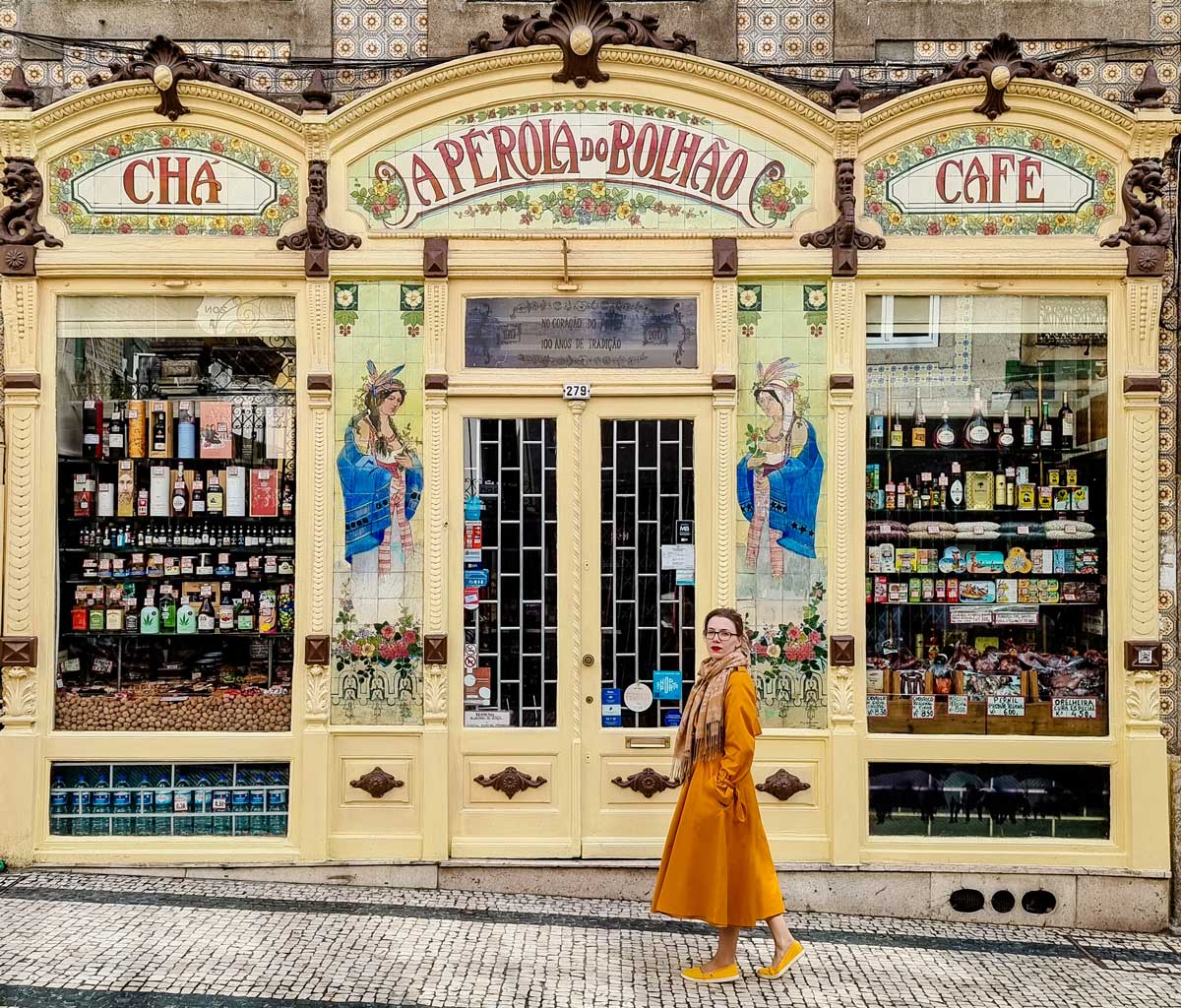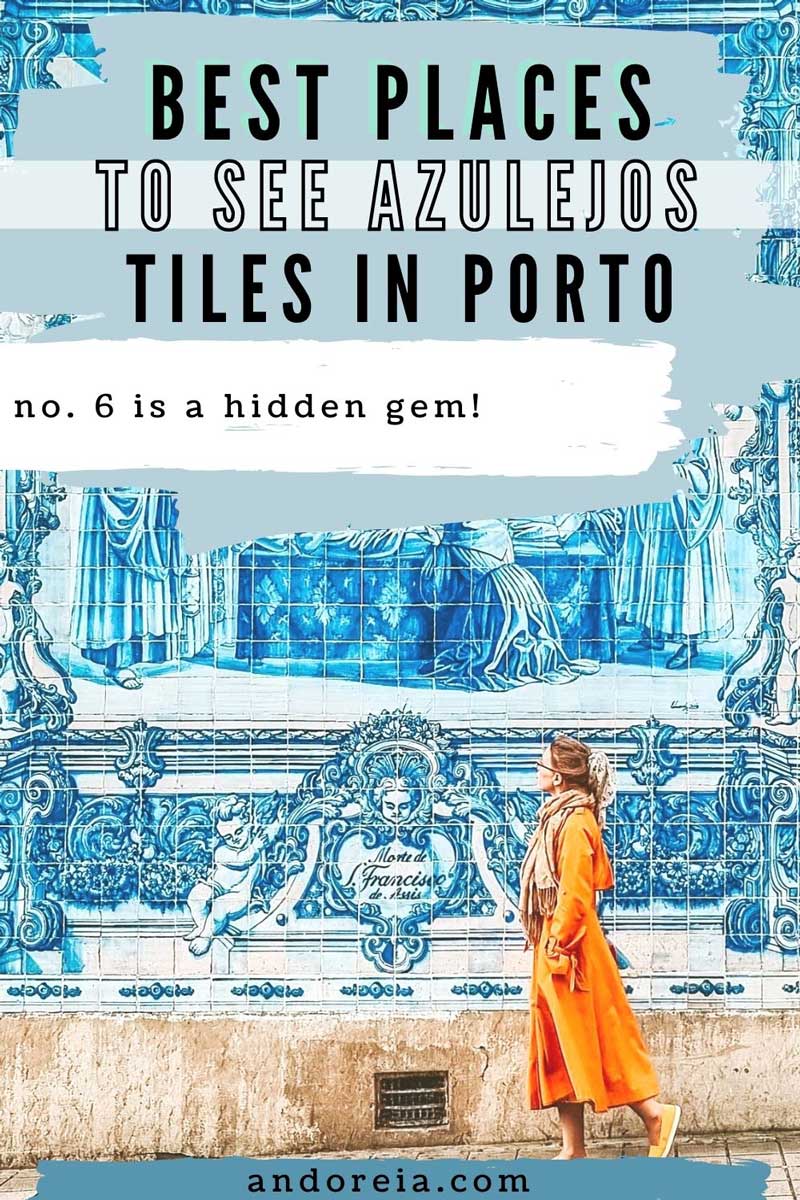Portugal is famous worldwide for its decorative tiles, however, most people live under the impression that Lisbon is the place to go if you want to see them. And while you can find azulejos (their official name) in the capital as well, the city with the best tilework is actually Porto.
The beautiful and intricate tiles that became so iconic for the architecture of Portugal can be traced back to when parts of the Iberian peninsula were still under Moorish rule. The word “azulejo” itself has Arabic origins, roughly meaning “polished stone”.
Portugal adopted the use of tiles into its culture during the early 16th century when King Manuel I traveled to Spain and was greatly impressed by the colorful tilework he witnessed there, so he started importing them back home.

Initially, the tiles were used to cover up large areas of blank walls that were so common inside buildings during the Gothic period, creating a more colorful and artistic appearance. Nowadays you can find colorful tiles literally everywhere from churches and palaces, to train stations and regular homes.
As their use spread in the Iberian Peninsula, the motifs also evolved from the simple geometric patterns that the Moorish used, to complex scenes depicting animals and people.
Until the mid-16th century, Portugal still relied on imports for their azulejo addiction, mainly from Spain where Italian potters contributed to the flourishing of the tile-making art there.
But after Flemish artisans settled in Lisbon, the country started producing its own tiles and remained to this date one of the biggest exporters.
01. Se do Porto (Porto Cathedral)


The Se do Porto, or Cathedral of Porto is one of the city’s most iconic and best-known landmarks. And if you’re looking for some amazing examples of azulejo tilework, then you’ll want to check it out.
The gothic cloister (my favorite part of the cathedral) is home to some beautiful blue and white tiles depicting scenes from the life of The Virgin Mary and Ovid’s Metamorphoses. When the light hits just right, you can take some stunning photos here.
The terrace above the cloister also has two entire walls decorated with azulejos.
The cathedral is located in the historical center of Porto, in Terreiro da Se, very close to the Luis I bridge. It costs 3 euros to enter.
📍 Location: Se do Porto
02. Sao Bento Station

The station is a must-see location for anyone interested in Porto’s tiles. The Sao Bento railway station was built in the early 20th century and it’s home to some of the most impressive azulejo tilework in the city.
While the main hall of the station might look quite ordinary from the outside, the interior will stun you. It is decorated with beautiful blue and white tiles that depict important historical events, as well as multicolored panels showing rural scenes and ways of transport.
In total, around 20,000 azulejo tiles were used to skillfully cover the walls.
Since it’s an actual train station, taking pics here can prove a bit difficult because it can get quite busy with people, but there’s nothing you can’t achieve with a bit of patience. Just make sure you don’t inconvenience others though.
The station is centrally located in Praca de Almeida Garret, not far from Luis I bridge and Se do Porto.
📍 Location: Sao Bento Train Station
03. Igreja do Carmo

Igreja do Carmo’s impressive blue and white tile-covered exterior is probably one of the most photographed in the city. From the front, the church looks rather simple with its grey facade, but once you see its lateral side, your jaw will likely drop.
The beautiful azulejos were added in 1912 (about 144 years after the church was completed) and they depict scenes of the founding of the Carmelite Order and Mount Carmel.
Igreja do Carmo is located at the corner of Praca de Carlos Alberto and Rua do Carmo.
📍 Location: Igreja do Carmo
04. Capela das Almas (Chapel of Souls)

The Capela das Almas (also known as Capela de Santa Catarina) is another must-see destination for anyone interested in Porto’s blue tiles. Similar to Igreja do Carmo, the chapel was built in the 18th century, but the beautiful azulejos were added much later, at the beginning of the 20th century.
The panels that decorate Capela das Almas are a deeper shade of blue than you’ll see at other churches and they cover its whole exterior, facade included.
Around 16.000 blue and white tiles were used and they depict scenes from the lives of St. Francis of Assisi and Saint Catherine. The chapel is located on Rua de Santa Catarina.
📍 Location: Capela das Almas
05. Igreja de Santo Ildefonso

The Church of Saint Ildefonso is a beautiful 18th-century church located in Praca de Batalha, in the historic center of Porto.
Beautiful blue and white azulejos tiles grace its exterior walls, depicting scenes from the life of Saint Ildefonso as well as figurative imagery from the Gospels. As with other churches in Porto, the decorative tiles were added later, at the beginning of the 20th century.
📍 Location: Igreja de Santo Ildefonso
06. A Perola do Bolhao

If you’re looking for a hidden gem in Porto, look no further than this grocery store. The store’s facade is magnificent, made in the Art Nouveau style with intricate letters, decorations, and images. Even if you’re not interested in buying anything, it’s worth stopping by just to admire the building.
Perola do Bolhao is located in downtown Porto, on Formosa Street, fairly close to Capela das Almas.
TIP: If you like Art Nouveau architecture as much as I do, then you might also want to check out Livraria Lello, a famous bookstore in downtown Porto and Majestic Cafe. I have to warn you though, the queues outside the bookshop can get insanely long.
📍 Location: A Perola do Bolhao
07. Painel de Azulejos by Joana Vasconcelos

If you want to see a more modern tilework, then head to the former Steak n Shake restaurant (now permanently closed).
The exterior wall on its right side is covered by a large multicolored tiled mural by Joana Vasconcelos, which is slowly becoming a popular Instagram spot in Porto. Around 8.000 hand-painted tiles were used.
📍 Location: Painel de Azulejos – Joana Vasconcelos
08. Igreja dos Congregados

Igreja dos Congregados is located just across the street from Sao Bento train station, on Rua de Sá da Bandeira. In contrast with other churches in Porto, the azulejo tiles that decorate its facade are not exclusively white and blue, but yellow as well.
📍 Location: Igreja dos Congregados
09. Historic center

Last but not least is the historic center of the city. If you remember, I mentioned that as time passed by and their popularity grew, tiles were been used everywhere, including on the exterior walls of residential houses.
Therefore, as you walk through the old city center of Porto, you’ll see many buildings covered with tiles, some more colorful than others. Ribeira neighborhood in particular is known for its azulejo-covered houses facing the Douro River.
Julio Resende’s artwork, the Ribeira Negra panel can also be seen here. The large tiled mural depicts colorful human and animal figures and it is located in the Ribeira tunnel, close to Luis I Bridge.
📍 Location: Ribeira
How much time do you need to see these locations?
I have found that a day is more than enough time to see all of the places I mentioned above. Since they’re located in the center of the city, fairly close together, it’s very easy to reach them on foot.
Happy travels~
YOU MIGHT ALSO LIKE


